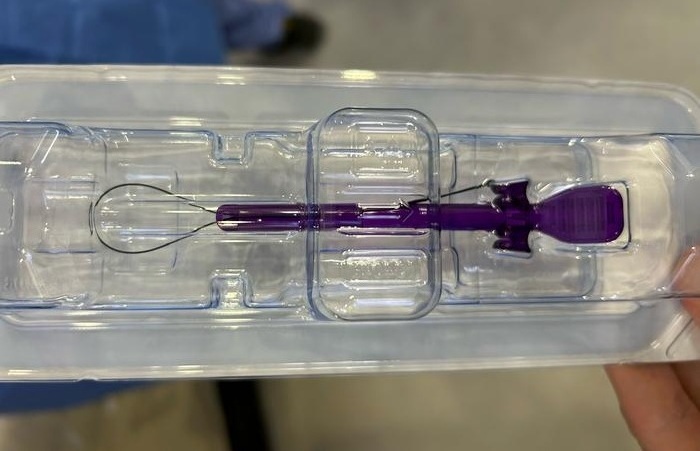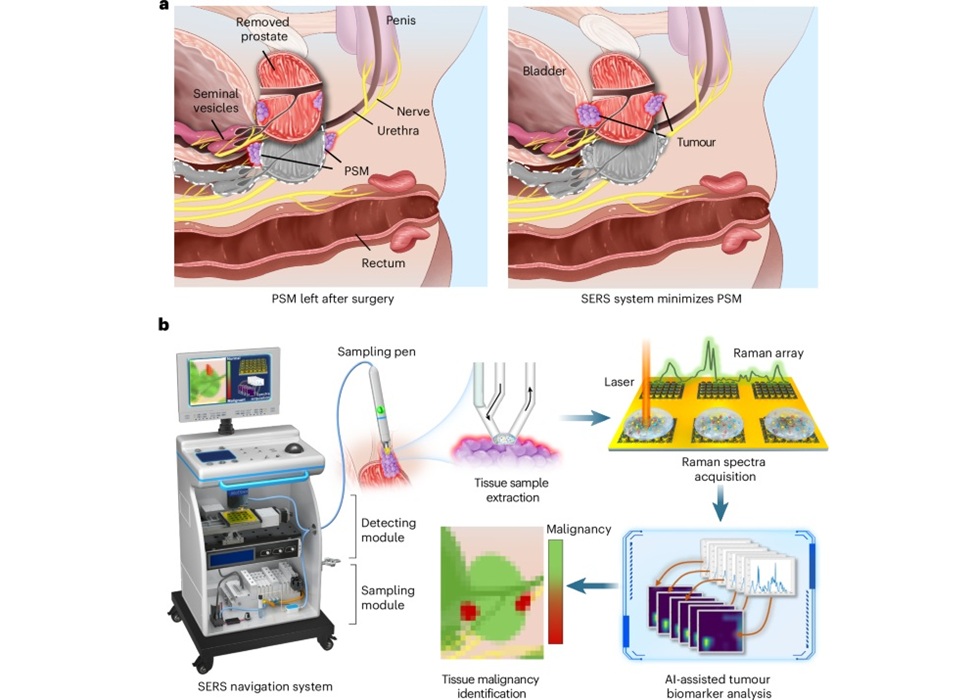Implantable Device for Pulmonary Hypertension Reduces Cardiac Workload and Enhances Blood Flow
|
By HospiMedica International staff writers Posted on 04 Mar 2024 |

Pulmonary hypertension is a severe, progressive disease affecting as many as 70 million people globally. It develops when the walls of the pulmonary arteries become rigid, losing their ability to stretch adequately to manage blood flow. Normally, the pressure in the pulmonary arteries of a healthy individual is relatively low. However, in patients with pulmonary hypertension, this pressure increases, and the vessel walls thicken and narrow, impeding blood flow and diminishing vessel elasticity with each heartbeat. This leads to heightened pressure and additional strain on the right side of the heart. Now, a novel implantable device can mimic the function of the healthy vessels by restoring compliance to the pulmonary vessels, thus enabling the heart to pump more blood for less energy. These can improve the ability to exercise while reducing the burden on the heart.
Aria CV’s (St. Paul, MN, USA) Pulmonary Hypertension System is an implantable gas-filled balloon that is introduced percutaneously and functions in the main pulmonary artery to reduce the excessive workload on the right heart that can cause right heart failure. The device aims to restore the benefits of a healthy pulmonary artery by reducing cardiac workload and increasing blood flow through the lungs. This novel device offers an alternative treatment for patients who continue to be significantly impacted by right heart dysfunction related to pulmonary hypertension, for which there are limited approved therapy options. The first patient has now been successfully implanted with the Gen 2 Aria CV Pulmonary Hypertension System as part of the ASPIRE PH clinical trial. The ASPIRE PH trial is a feasibility study assessing the initial safety, tolerability, and efficacy of the Aria System under the Food and Drug Administration’s (FDA) Early Feasibility Study Program.
“The successful patient implant of the Gen 2 system is a significant milestone in realizing our mission to improve the lives of those suffering from pulmonary hypertension, a life-threatening disease that can lead to heart failure,” said Dan Gladney, President and CEO of Aria CV. “This procedure is a testament to the dedicated ASPIRE PH team that is providing patients with a novel therapeutic option to treat this deadly condition. If approved, this technology has the potential to be lifesaving and life-changing for thousands of patients with pulmonary hypertension.”
Latest Critical Care News
- Nasal Drops Fight Brain Tumors Noninvasively
- AI Helps Optimize Therapy Selection and Dosing for Septic Shock
- Glowing Bacteria ‘Pills’ for Detecting Gut Diseases Could Eliminate Colonoscopies
- Skin-Permeable Polymer Patch Delivers Insulin Non-Invasively Through Skin
- Nanogel Technology Almost 100% Effective in Destroying Drug-Resistant Bacteria Within Hours
- Wearable Ultrasound Sensor Delivers Noninvasive Treatment Without Surgery
- Gel-Free ECG System to Transform Heart Health Diagnosis
- Biodegradable Patch Repairs Damaged Tissue After Heart Attack
- Magnetically Guided Microrobots to Enable Targeted Drug Delivery

- Smart Nanomaterials Detect and Treat Traumatic Brain Injuries Simultaneously
- Earlier Blood Transfusion Could Reduce Heart Failure and Arrhythmia in Heart Disease Patients
- 'Smart' Shirt Detects Epileptic Seizures in Real Time
- Skin Patch Measures Effectiveness of Flu/COVID Vaccines in 10 Minutes
- Complete Revascularization Reduces Risk of Death from Cardiovascular Causes
- Tiny Fish-Inspired Robots Navigate Through Body to Deliver Targeted Drug Therapy
- Coronary Artery Stenosis Could Protect Patients from Pulmonary Embolism Effects
Channels
Surgical Techniques
view channelNovel Endoscopy Technique Provides Access to Deep Lung Tumors
Detecting lung cancer early can save lives, but diagnosing small tumors deep in the outer regions of the lungs remains a major clinical challenge. Although CT scans frequently identify tiny suspicious... Read more
New Study Findings Could Halve Number of Stent Procedures
When a coronary artery becomes acutely blocked during a heart attack, opening it immediately is essential to prevent irreversible damage. However, many patients also have other narrowed vessels that appear... Read morePatient Care
view channel
Revolutionary Automatic IV-Line Flushing Device to Enhance Infusion Care
More than 80% of in-hospital patients receive intravenous (IV) therapy. Every dose of IV medicine delivered in a small volume (<250 mL) infusion bag should be followed by subsequent flushing to ensure... Read more
VR Training Tool Combats Contamination of Portable Medical Equipment
Healthcare-associated infections (HAIs) impact one in every 31 patients, cause nearly 100,000 deaths each year, and cost USD 28.4 billion in direct medical expenses. Notably, up to 75% of these infections... Read more
Portable Biosensor Platform to Reduce Hospital-Acquired Infections
Approximately 4 million patients in the European Union acquire healthcare-associated infections (HAIs) or nosocomial infections each year, with around 37,000 deaths directly resulting from these infections,... Read moreFirst-Of-Its-Kind Portable Germicidal Light Technology Disinfects High-Touch Clinical Surfaces in Seconds
Reducing healthcare-acquired infections (HAIs) remains a pressing issue within global healthcare systems. In the United States alone, 1.7 million patients contract HAIs annually, leading to approximately... Read moreHealth IT
view channel
EMR-Based Tool Predicts Graft Failure After Kidney Transplant
Kidney transplantation offers patients with end-stage kidney disease longer survival and better quality of life than dialysis, yet graft failure remains a major challenge. Although a successful transplant... Read more
Printable Molecule-Selective Nanoparticles Enable Mass Production of Wearable Biosensors
The future of medicine is likely to focus on the personalization of healthcare—understanding exactly what an individual requires and delivering the appropriate combination of nutrients, metabolites, and... Read moreBusiness
view channel
Philips and Masimo Partner to Advance Patient Monitoring Measurement Technologies
Royal Philips (Amsterdam, Netherlands) and Masimo (Irvine, California, USA) have renewed their multi-year strategic collaboration, combining Philips’ expertise in patient monitoring with Masimo’s noninvasive... Read more
B. Braun Acquires Digital Microsurgery Company True Digital Surgery
The high-end microsurgery market in neurosurgery, spine, and ENT is undergoing a significant transformation. Traditional analog microscopes are giving way to digital exoscopes, which provide improved visualization,... Read more
CMEF 2025 to Promote Holistic and High-Quality Development of Medical and Health Industry
The 92nd China International Medical Equipment Fair (CMEF 2025) Autumn Exhibition is scheduled to be held from September 26 to 29 at the China Import and Export Fair Complex (Canton Fair Complex) in Guangzhou.... Read more















